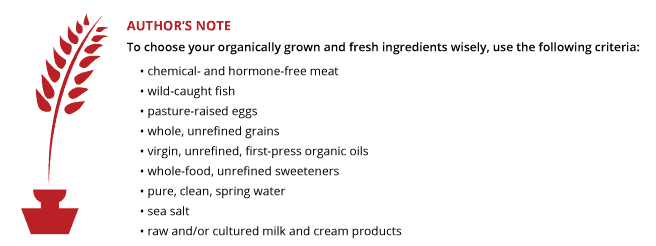For years, that boogey man cholesterol has been convincing many of us to never eat eggs, especially yolks. This phenomenon carries on even after many studies have come out assuring us that our fear of cholesterol is based on nothing more than a myth. Yes, the cholesterol myth still exists.
After a recent and somewhat heated argument with a close friend who’d sworn off eggs and other cholesterol-containing foods for many months, my friend came to me complaining of some interesting symptoms. For the sake of anyone out there who is still convinced that eggs are bad for us, I thought it was time to shine a spotlight on one of the healthiest foods on the planet.
I hope to keep this relatively simple as much of what’s been written about cholesterol is technical and sometimes hard to understand. Along with the goodness of eggs, I will of course discuss egg allergies and cap off this blog post with some healthy egg recipes. Now let’s take it from the top for newcomers to the cholesterol myth.
When and How Did the Cholesterol Scare Start?
This 2012 Financial Post article explains how “lipophobia,” or fear of dietary fat, swept over the middle-class in the 1950s, and in the years since how it became too powerful to overcome.
The story of lipophobia is possibly one of the most devastating and damaging health myths ever perpetrated on the American public. In the 1950s, after the World War II, a physiologist at the University of Minnesota in Minneapolis named Ancel Keys noticed a spate of articles in local newspapers about businessmen being struck down with sudden heart attacks.
Keys began running tests on middle-aged businessmen and found their cholesterol levels to be high. He then went on to test Italian men, both poor and wealthy, and found that they did not seem to be as susceptible. Instead of learning more about the important function of cholesterol and how a healthy body manages it, he came to the conclusion that high-fat diets were the cause of these heart attacks.
In his fervor to promote his theory, Keys engaged Dr. Paul Dudley White, America’s most prominent cardiologist. White was equally ignorant of the important role of healthy fat in the diet, and he soon became convinced that the simple diets of Italians held the key to their immunity from the epidemic of heart attacks. (This has always puzzled me because the Italian diet is rich in pork fat, butter, cream, and cheese.
The myth took on new proportions when President Eisenhower had a heart attack. When White was summoned to the President’s bedside, he was able to explain his theory of saturated fats to the most powerful man in the world. This was the final stepping stone. Despite thousands of years of eating saturated fats, Americans were soon convinced that saturated fats were destroying their health.
In an article for Time magazine that featured the work of Ancel Keys, Dr. White proclaimed that atherosclerosis was the real bugbear (his wording) that was responsible for attacking the coronary arteries. His wife, Mrs. Keys, was then engaged to write a cookbook titled Eat Well and Stay Well. She wanted to teach Americans how to reduce their cholesterol by excluding hard fats such as butter, lard, cheese and lard-based margarine (margarine made from beef tallow). The book encouraged the use of fats that were liquid at room temperature (corn oil, cottonseed oil, etc.). All saturated fats were to be avoided.
The hound being loosed, it wasn’t long before the giant commercial interests were making vegetable oils the choice of health-minded cooks. (Sigh)
We now know the consequences: untold heart troubles, obesity, and other devastating disorders. I quote from the Financial Post article: “From 1956 to 1976, per-capita butter consumption fell by over half and egg consumption dropped by over a quarter. Consumption of margarine doubled from 1950 to 1972 and that of vegetable oil rose by over 50% in the 10 years from 1966 to 1976.”
I encourage you to read the Financial Post article in full. I also highly recommend an episode of the Wise Traditions podcast titled “The Oiling of America” by Sally Fallon Morell. It will help you better understand this travesty. Please share these resources with friends and family, and kindly share this blog post for anyone who you think would benefit from a less technical article on the topic.
Let’s Now Address Egg Allergies
Since I belong to a discussion group of people who follow the diet recommended by Sally Fallon Morrell, president of the Weston A. Price Foundation, I decided to bring up this topic with the group. I especially wanted to hear from those who are afraid of eggs. I found this subscriber’s comment interesting (emphasis mine):
“I haven’t got a fear of eggs, but I do loathe them. I am allergic to the albumin in the egg white and puff up like a puffer fish. Egg yolks are fine, and I eat them most days. The whole cholesterol fear thing came from Ancel Keyes and his flawed heart disease cholesterol study. Since those flawed studies, which most doctors take as the gospel, people have been needlessly dying. But what do I know…with my high fat intake and perfect cholesterol!”
His final quip about his high saturated fat diet and perfect cholesterol made me laugh!
Egg Allergy: When You Should Avoid Eggs
The American College of Allergy, Asthma, and Immunology (ACAAI) warns of egg allergies: “Unfortunately, eggs are a hidden ingredient in many foods, including canned soups, salad dressings, ice cream and many meat-based dishes, such as meatballs and meatloaf. Even some commercial egg substitutes contain egg protein. As a result, people with an egg allergy must be vigilant about reading labels and asking about the ingredients of foods prepared by others.”
In the same article, the ACAAI goes on to explain that eggs are among the most common food allergens. Within a short time of consuming (or in some cases even touching) eggs, people afflicted with this allergy may experience the following symptoms:
- Skin reactions, such as swelling, a rash, hives or eczema
- Wheezing or difficulty breathing
- Runny nose and sneezing
- Red or watery eyes
- Stomach pain, nausea, vomiting or diarrhea
- Anaphylaxis (less common)
The article also warns that if you’ve been diagnosed with an allergy to either egg whites or egg yolks, you should avoid all eggs as you can’t be sure of completely separate the white from the yolk.
Health Benefits of the Humble Egg
You can learn about the dense nutritional information of eggs from many different sources. For this blog post, I chose a WebMD article that I found reliable to gather up some of the pertinent facts about eggs:
The egg is a power-packed nutritional food. Along with (raw) milk, “eggs contain the highest biological value (or gold standard) for protein. One egg has only 75 calories but 7 grams of high-quality protein, 5 grams of fat, and 1.6 grams of saturated fat, along with iron, vitamins, minerals, and carotenoids.”
The egg is packed with lutein and zeaxanthin, which are associated with a reduced risk of macular degeneration, the leading cause of blindness in older adults. Eggs also contain enhanced choline, a powerful nutrient that your brain and memory cannot afford to skip.
An article in the website Healthline explains that eggs “are among the most nutritious foods on the planet. A whole egg contains all the nutrients required to turn a single cell into a baby chicken.”
A single large boiled egg contains the following recommended daily allowance (RDA) of nutrition:
- Vitamin A: 6 percent RDA
- Folate: 5 percent RDA
- Vitamin B5: 7 percent RDA
- Vitamin B12: 9 percent RDA
- Vitamin B2: 15 percent RDA
- Phosphorus: 9 percent RDA
- Selenium: 22 percent RDA
Eggs also contain decent amounts of vitamin D, vitamin E, vitamin K, vitamin B6, calcium, and zinc.
Eggs from a Real Farm: Raising Your Own Chickens for Superior Eggs
What could be more fun than to have a real farm and raise chickens and eggs for family and profit? “Real Eggs from a Real Farm” from the Weston A. Price Foundation explains everything there is to know about:
- Localizing the feed
- Adapting the breed
- Quality and scale
- Research versus production
- Heirloom chicken breeds
- How to know a good egg from a bad egg
Now read on for a few great egg recipes…
Coconut Flour Bread (Gluten-Free)
—Adapted from Cooking with Coconut Flour by Bruce Fife, ND
This bread is made with full fat coconut flour. You can use it much like regular bread or in lieu of pound cake. Since coconut flour lacks gluten, the leavening comes from the eggs and baking powder. If you have an “I won’t eat eggs” person in your family, this is a perfect way to get the great nutrition from eggs into their diet. Shh… (Smile)
Ingredients
12 whole eggs
1 cup real butter, slightly melted
¼ cup honey (optional, or less to taste)
1 teaspoon sea salt
1½ cups sifted full fat coconut flour
2 teaspoons baking powder
Special equipment: 5½x9-inch loaf pan
Instructions
- Using a hand mixer, blend eggs, butter, honey, and salt. In a separate bowl, combine coconut flour and baking powder. Use a flour sifter to mix thoroughly into batter until there are no lumps.
- Pour into greased loaf pan (I use coconut oil). Bake at 335°F in the middle rack of the oven until bread is nicely browned, approximately 1 hour or until a toothpick comes out clean (or temperature gauge is at 190°F).
- Remove from oven. Transfer loaf pan to a rack and allow bread to cool completely in the pan. When cool, with one hand on top of the bread, gently turn pan over to release the bread.
Baked Savory Custard with Cheese
—I found this lovely recipe years and years ago in an old New York Times article.
Yield: 4 servings
Time: 45 minutes
Ingredients
2 cups cream, half-and-half, or milk
1 sprig thyme (optional)
1 clove garlic (optional)
3 eggs, plus 2 yolks
Pinch cayenne
½ teaspoon salt
½ cup grated semi-hard cheese, such as Gruyère, Comté, or Emmental
½ cup grated Parmesan
Instructions
- Put cream in a small pot with thyme and garlic, if you’re using them. Cook until it begins to steam. Heat oven to 300°F, and set a kettle of water to boil.
- Place eggs and egg yolks, cayenne, and salt in a medium bowl, and whisk or beat until blended. Stir in the cheese. Remove thyme and garlic from cream, then add cream gradually to egg mixture, whisking constantly. Pour mixture into a 1-quart dish or into 4 ramekins or custard cups.
- Place dish or ramekins in a deep baking pan. Pour boiling water into the pan, to within about 1 inch of top of dish or ramekins. Bake until mixture is not quite set (it should jiggle a bit in middle), about 30 minutes for ramekins or longer for a baking dish. Keep in mind that cream sets faster than milk. Serve warm, at room temperature, or cold within a few hours of baking.
Raw Milk Tapioca with Raw Honey—A Traditional Cook original (basic tapioca pudding)
Serves 6–8
Ingredients
½ cup small pearl tapioca
2½ cups of raw milk
¼ teaspoon sea salt
2–3 tablespoons raw honey
2 eggs, separated
1 teaspoon vanilla
Instructions
- Soak tapioca in 2 cups of water overnight (do not add anything else to the water). In the morning, pour milk into a double boiler and heat just until no longer cold. Add salt and tapioca. Continue to heat until small bubbles appear at the sides of the pan.
- Cover and cook on very low heat for 1 hour. The milk should not simmer or boil. At the end of that hour, add raw honey and allow it to melt in the hot tapioca.
- Beat egg yolks. Slowly add yolks in small amounts to the hot mixture, stirring quickly and blending thoroughly. Cook on very low heat until tapioca is thickened, about 40 minutes on the lowest heat setting.
- Pour into a pretty glass bowl and refrigerate until till it sets and cools completely. Serve in dessert cups. If desired, pour a sauce of your choice (my favorite is strawberry or blueberry) over the top.
Afterthoughts from the Traditional Cook
Peter got his very own egg. His had a package of skittles.
Lizzy got her very own egg. Hers had two rolling dice.
Sarah got her very own egg. Hers had a book of riddles.
Landon got his very own egg. His had bean-bags with rice.
Kathy got her very own egg. Hers had a mini clown.
Henry got his very own egg. His had a lock and key
I got my very own egg, and I was jumping up and down
As this was my first egg that was given just for me.
I had reached the age of ten, so now I was allowed
To have my own egg this Easter, and boy was I proud.
I took my egg, I tore it open, and what was inside?
What was inside was suddenly something I wanted to hide…
“What’s inside?” Asked Peter and Lizzy.
“What’d you get?” Asked Sarah and Landon.
“Is it candy?” Poked Kathy and Henry.
And I ran away, because nothing is a hard companion.
Nothing. My egg had nothing. I tried to let it go…
It really should’ve been easier as the months went all too slow…
But nothing, good old nothing: It stayed and seemed to grow…
And nothing’s now my only friend, and because I made it so.
—“The Nothing Egg,” MindsPalace, October 2017
Disclaimer from Maria Atwood, CNHP: I am a Certified Natural Health Professional, CNHP, not a medical doctor. I do not diagnose, prescribe for, treat, or claim to prevent, mitigate, or cure any human diseases. Please see your medical doctor or health practitioner prior to following any recommendations I make in my blog posts or on my website.
Images from iStock/FreedomMaster (main), eelnosiva (butter heart), Alina Demidenko (little girl), Des Green (eggs with faces).






